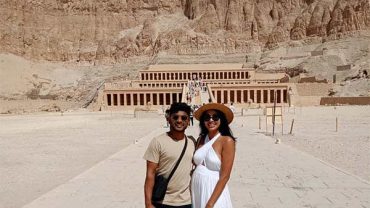The Mosque of Sultan Nasir Mohammed stands as a captivating symbol of architectural brilliance and cultural heritage. Situated in the heart of [insert location], this majestic mosque is a testament to the rich history and religious significance of the region. Named after the illustrious Sultan Nasir Mohammed, a key figure in the area’s history, the mosque holds not only spiritual importance but also showcases the architectural prowess of its time.
Historical Significance
The roots of the Mosque of Sultan Nasir Mohammed delve deep into the annals of history. Constructed during the [insert era] by skilled artisans and architects, the mosque reflects the artistic and cultural ethos prevalent during that period. Sultan Nasir Mohammed, known for his patronage of the arts and his commitment to promoting religious tolerance, commissioned the construction of this grand mosque as a symbol of unity among diverse communities.
The mosque’s historical significance extends beyond its construction. It has been a witness to pivotal moments in the region’s history, surviving wars, political upheavals, and societal transformations. The architectural elements embedded in its structure serve as silent narrators of the bygone eras, allowing visitors to connect with the past and gain a profound understanding of the cultural mosaic that defines the region.
Architectural Marvel
The architectural marvel of the Mosque of Sultan Nasir Mohammed is evident from its intricate design and structural ingenuity. The mosque boasts a harmonious blend of various architectural styles, reflecting the diverse influences that shaped the region during its construction. From ornate calligraphy adorning the walls to meticulously crafted domes and minarets, every detail speaks of a commitment to aesthetic beauty and craftsmanship.
One striking feature is the courtyard, a vast open space surrounded by arcades adorned with geometric patterns and floral motifs. The central prayer hall is a masterpiece of symmetry and balance, with a mihrab pointing towards Mecca and a minbar for the Friday sermon. The minarets, towering into the sky, not only serve a functional purpose but also stand as symbols of spiritual elevation.
Cultural Hub
Beyond its religious function, the Mosque of Sultan Nasir Mohammed serves as a cultural hub, fostering community engagement and dialogue. Regular events, lectures, and cultural programs take place within its premises, creating a space where people from diverse backgrounds come together to celebrate their shared heritage. The mosque’s role as a cultural center reinforces its relevance in contemporary society, transcending its historical origins.
Visitors to the mosque often find themselves immersed in the vibrant tapestry of cultural activities, from art exhibitions to music performances. The mosque becomes a living testament to the evolving nature of culture and how historical landmarks can adapt to meet the needs of the present while preserving the essence of their past.
Preservation Efforts
Preserving the Mosque of Sultan Nasir Mohammed is not just a duty; it is a commitment to safeguarding the legacy for future generations. Conservation efforts have been ongoing, with experts employing advanced techniques to maintain the structural integrity and authenticity of the mosque. These initiatives not only ensure the physical preservation of the site but also contribute to the educational aspects, allowing scholars and enthusiasts alike to study and appreciate the craftsmanship and historical context.
Local and international organizations have recognized the mosque’s significance, contributing to conservation projects and initiatives that aim to promote awareness about its historical and cultural value. Through collaborative efforts, the Mosque of Sultan Nasir Mohammed continues to stand tall, bridging the gap between the past and the present.
Touristic Appeal
The Mosque of Sultan Nasir Mohammed has become a magnet for tourists, drawing visitors from around the world who are eager to explore its architectural splendor and delve into the historical tapestry it represents. The mosque’s allure goes beyond its religious and cultural significance; it serves as a window into the soul of the community, allowing outsiders to appreciate the traditions and values that have shaped the region.
Tourists often embark on guided tours, immersing themselves in the stories and legends surrounding the mosque. The guided tours provide a nuanced understanding of the architectural symbolism, religious rituals, and the historical context that envelopes this iconic structure. For many, the visit becomes a transformative experience, fostering a deeper appreciation for the interplay between faith, history, and art.
Explore other Mosque.
Interfaith Dialogue
In an era marked by diverse cultural interactions, the Mosque of Sultan Nasir Mohammed has emerged as a beacon for interfaith dialogue. The mosque’s leadership has been actively involved in initiatives that promote understanding and collaboration among followers of different religions. The serene atmosphere of the mosque, coupled with its commitment to inclusivity, encourages open conversations about shared values and the common human experience.
Interfaith events, seminars, and discussions hosted within the mosque’s premises serve as a bridge, connecting people of various faiths and backgrounds. This dialogue not only enriches the spiritual experience of those who frequent the mosque but also fosters a sense of unity and respect among the broader community.
Educational Hub
The educational role of the Mosque of Sultan Nasir Mohammed extends beyond its cultural programs. Educational institutions often collaborate with the mosque to organize workshops, lectures, and research programs. The mosque becomes a dynamic learning environment where students and scholars explore not only the architectural and historical aspects but also the broader socio-cultural context that influenced its creation.
The library within the mosque compound is a treasure trove of manuscripts, historical documents, and scholarly works. Researchers, historians, and students find this repository invaluable for gaining insights into the historical evolution of the region and the intellectual pursuits that flourished during different epochs.




Comment (0)